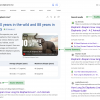In today’s digital age, web applications play a crucial role in the success of businesses worldwide. Developing a high-quality web application requires a combination of technical expertise, innovative thinking, and adherence to best practices. In this article, we will explore the key aspects and guidelines for developing web applications that deliver outstanding user experiences and optimal performance.
- Understand User Needs: The foundation of any successful web application lies in understanding the target audience and their requirements. Conduct thorough research to identify user needs, preferences, and pain points. This knowledge will help you tailor the application to their expectations, leading to higher user satisfaction.
- User-Centric Design: A visually appealing and intuitive user interface is essential for engaging users and keeping them hooked. Follow modern design principles, such as responsive layouts, clear navigation, and consistent branding. Prioritize usability and create seamless interactions to enhance the overall user experience.
- Scalability and Performance: Web applications should be designed to handle increased traffic and data volumes without compromising performance. Employ efficient coding practices, optimize database queries, and leverage caching techniques to ensure fast load times and smooth user interactions.
- Security Measures: Protecting user data and ensuring the security of web applications is paramount. Implement industry-standard security measures, such as encryption, secure authentication, and regular vulnerability assessments. Stay updated with the latest security practices to mitigate potential risks and safeguard user information.
- Cross-Platform Compatibility: With users accessing web applications from various devices and browsers, it’s crucial to ensure cross-platform compatibility. Develop responsive applications that adapt seamlessly to different screen sizes and operating systems. Perform thorough testing across multiple platforms to guarantee a consistent experience.
- Continuous Testing and Debugging: Rigorous testing and debugging are vital to identify and resolve issues before the application goes live. Implement automated testing processes, conduct regular code reviews, and gather user feedback to address any bugs or usability concerns promptly.
- Documentation: Well-documented code and clear documentation for end users and developers simplify maintenance and future updates. Document APIs, database schemas, and application architecture to facilitate collaboration and provide a comprehensive resource for developers and administrators.
- Ongoing Support and Updates: Web application development is an iterative process. Offer continuous support to users, address their concerns, and provide regular updates to enhance functionality and address emerging trends. Stay proactive in monitoring performance, security, and user feedback to ensure a seamless user experience.
By following these best practices, your web application development process will be streamlined, resulting in a high-quality, user-centric, and efficient product. At GLOBUS.studio, we specialize in delivering exceptional web application solutions that align with these best practices. Contact us today to discuss your requirements and let our experienced team transform your vision into a successful web application.






